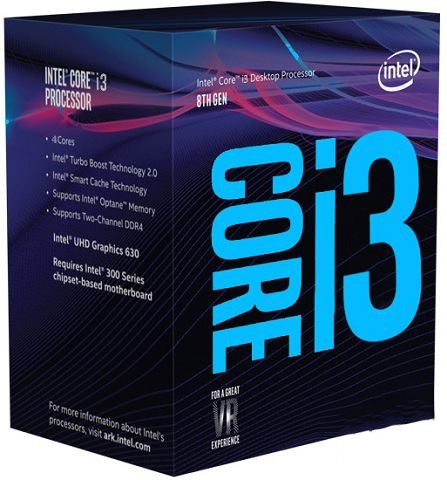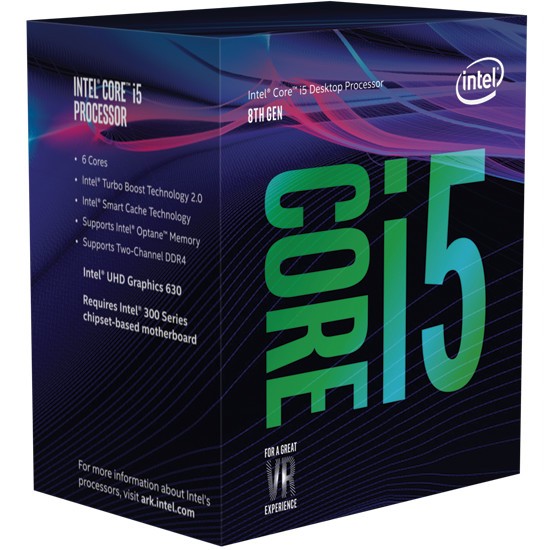Intel Coffee Lake Platform: Processors and Motherboards

In this table, you can compare the technical characteristics of processors from reviews. You can choose the model yourself in the processor catalog.
We also recommend reading:
- "Intel Basin Falls Platform: Processors and motherboards";
- "AMD Ryzen AM4 platform: processors and motherboards";
- "AMD Bristol Ridge Platform: Processors and Motherboards".
The last generation of Intel Kaby Lake processors shook the position of Core i3 as a strong middle man. And all because the $80 Pentium G4600 received the same two physical cores and four virtual threads as the more expensive Core i3-7100. Fortunately, the eighth generation of Coffee Lake has returned Core i3 to its former glory: The $120 novice 8100 received four real cores, like the old and one and a half times more expensive i5-7400.
At the same time, unlike the Core i5, the i3-8100 does not have an intricate frequency calculation scheme with a nominal value and Turbo Boost auto-acceleration. The chip runs at a stable 3.6 GHz — not a record, but quite a decent indicator in 2017-2018. If you want more, buy a 4-gigahertz i3-8350K and overclock it manually to 5+ GHz. The transition from four threads to four cores had the most positive effect on new demanding games (CoD WW II, Prey, Dishonored 2). The average frame time (delay) decreased, due to which microphryses disappeared and the responsiveness of the control increased.
The integrated graphics, compared to the 7th generation, although renamed from Intel HD Graphics 630 to UHD 630 (implying support for UltraHD monitors and hardware acceleration of 4K video formats H.265 and VP9), but its gaming performance remained the same. Will pull WoT, CS:GO and Dota 2, but less. As a result, Intel Core i3-8100 turned out to be a worthy answer to the quad-core AMD Ryzen 3 1200. It remains only to wait for the release of cheap motherboards with the younger 300-series chipsets (Coffee Lake processors are incompatible with the old Intel 100 and 200-series chipsets).
| Rozetka.ua | 3 380 ₴ | To Store |
| Rozetka.ua | 3 150 ₴ | To Store |
Core i5-8400 is perhaps the most interesting processor of the Coffee Lake family. Unlike the i5 of previous generations, it has not four, but six physical cores at a constant price of $ 180. As a result, in games, the i5-8400 demonstrates even greater performance than the quad-core, but eight-threaded Core i7-7700 for $ 350. Whereas in video editing and other professional tasks, eight threads are still faster than six cores.
At first glance, the i5-8400 has a low base frequency — only 2.8 GHz. And the claimed Turbo Boost auto-acceleration frequency of 4 GHz is relevant only for one core. But in addition to single-core auto—overclocking, the i5-8400 also has a multi-core, but slightly less high-frequency — up to 3.8 GHz. And unlike laptop low-voltage Core i5, auto-overclocking is not limited in time. As long as there is enough power to the motherboard and the cooler heat sink (preferably replace the box with a tower one), Turbo Boost will work for all six cores (see the article "5 proven tips on how to cool a PC in the summer heat").
Like other Core Coffee Lake, the i5-8400 has built-in UHD 630 graphics. But this processor is clearly not designed for it, but for discrete graphics cards of the GeForce GTX 1060 or 1070 level and Radeon RX 580 or Vega RX 56. The most resource-intensive games, such as Assassin's Creed Origins, are no longer able to work smoothly on quad—core processors — they need at least six cores. The fault is not so much the game engines themselves, as the anti-piracy protection systems Denuvo and VMProtect, which load the processor very much. As a result, at the moment, the i5-8400 can be considered the fundamental processor for assembling a gaming PC, which is capable of pulling any modern game and has a margin of performance for at least a couple of years.
Intel has not released intermediate Core i5 models-8500 and 8600, by analogy with the 7500 and 7600, at least at the start of the eighth generation (they may appear later). Next to the younger i5-8400 comes the top—end 8600K – also six-core, but with a high base frequency (3.6 GHz), an even higher auto-acceleration frequency (4.1 – 4.3 GHz) and the possibility of manual overclocking (as evidenced by the suffix "K"). Integrated UHD 630 graphics are included.
The overclocking potential of each particular processor instance is always a lottery. But judging by the reviews on east european and foreign hardcore sites, the Core i5-8600K is almost guaranteed to take the 5 GHz mark. And if there is a motherboard with an enhanced power subsystem, overclocking can reach 5.2 – 5.4 GHz. And this is not "dropsy" or liquid nitrogen, but an ordinary tower air cooler (see the article"Air, water and copper pipes: the 5 best CPU coolers of 2017").
Due to the lack of support for parallelizing physical cores to Hyper-Threading threads, the i5-8600K is less heated than the twelve-threaded Core i7-8700K. This allows it to be overclocked to a higher frequency and, as a result, it handles better with games that are demanding not so much on the number of cores as on the performance of each of them. Examples of such games are PUBG and ARMA 3. If you are primarily interested in them, build a computer for 8600K. If you play all the new products in a row, then it's better to bet on an eight or twelve-threaded AMD Ryzen 5.
Core i7-8700 is the new leader of the consumer line of Intel processors. With twelve high-frequency (auto-overclocking up to 4.6 GHz) virtual streams of the latest Coffee Lake architecture, it was able to overtake in performance not only the sixteen-threaded AMD Ryzen 7, but also the expensive Core i7-7800X Skylake-X for the LGA2066 socket. Moreover, unlike the aforementioned processors, the 8700 has built-in graphics (maybe it will come in handy).
If the power consumption of Coffee Lake up to Core i5 roughly corresponds to that of Kaby Lake, then the twelve-threaded Core i7-8700 consumes clearly more electricity than the eight-threaded 7700. In this case, Intel's switch to the updated LGA1151-v2 socket, which has more active power contacts, seems quite justified. And in general, it is better not to save money on the motherboard for the Core i7-8700: it is better to make a choice in favor of, if not a top-end, then at least an average-price model with radiators on mosfets.
The Core i7-8700 has become the only eighth-generation processor that costs a little more (by 15 percent) than its seventh-generation predecessor. But at the same time, it turned out to be already one and a half times more powerful in multithreading and 10 percent more powerful in single-threading. To build a gaming PC, even with a margin of performance for many years to come, the i7-8700 is probably redundant. His lot is professional workstations for video editing or three—dimensional modeling, which sooner or later will beat off the money invested in them.

ASRock Z370 Pro4 is a representative of the early wave of motherboards for Intel Coffee Lake processors, which, with a de jure unchanged LGA1151 socket, are de facto supported only by 300—series chipsets. It is important to note that to support Core i3, you will have to pre-update the BIOS firmware, whereas i5 and i7 work, as they say, "out of the box". Four DIMM DDR4 slots support RAM modules with a frequency of up to 4266 MHz (if more than one module is installed, the maximum frequency will be reduced).
Two PCI-E x16 slots allow you to organize a bundle of AMD CrossFireX video cards, but not NVIDIA SLI (the restriction is purely software, there are no hardware reasons for this). In addition, there are three PCI-E x1 connectors and one "old-school" PCI for connecting network, audio and video recording boards. The disk subsystem can be built from six classic SATA disks and two newfangled M.2 drives (including high-speed Intel Optane). The third M.2 slot (shortened) is designed exclusively for a laptop-style Wi-Fi adapter.
The ASRock Z370 Pro4 costs about $140, which seems to be a lot, but due to the temporary absence of models on junior chipsets, it is one of the most affordable solutions on the market. We recommend it to everyone who builds a computer on Coffee Lake, except, perhaps, avid overclockers. Due to the relatively small size of the radiator on the mosfets, this motherboard will not be able to demonstrate record overclocking of the processor for sure.
Universal models with high safety indicators for children under the age of 12.
Other things being equal, the Chinese middle class has a more humane price tag compared to A-brands.
The tasks of whipping and kneading the dough have never been performed so simply.
Humidifiers with the function of aromatherapy, ionization, steam heating or air purification.
The impact drill is a universal assistant in repair and assembly.



















